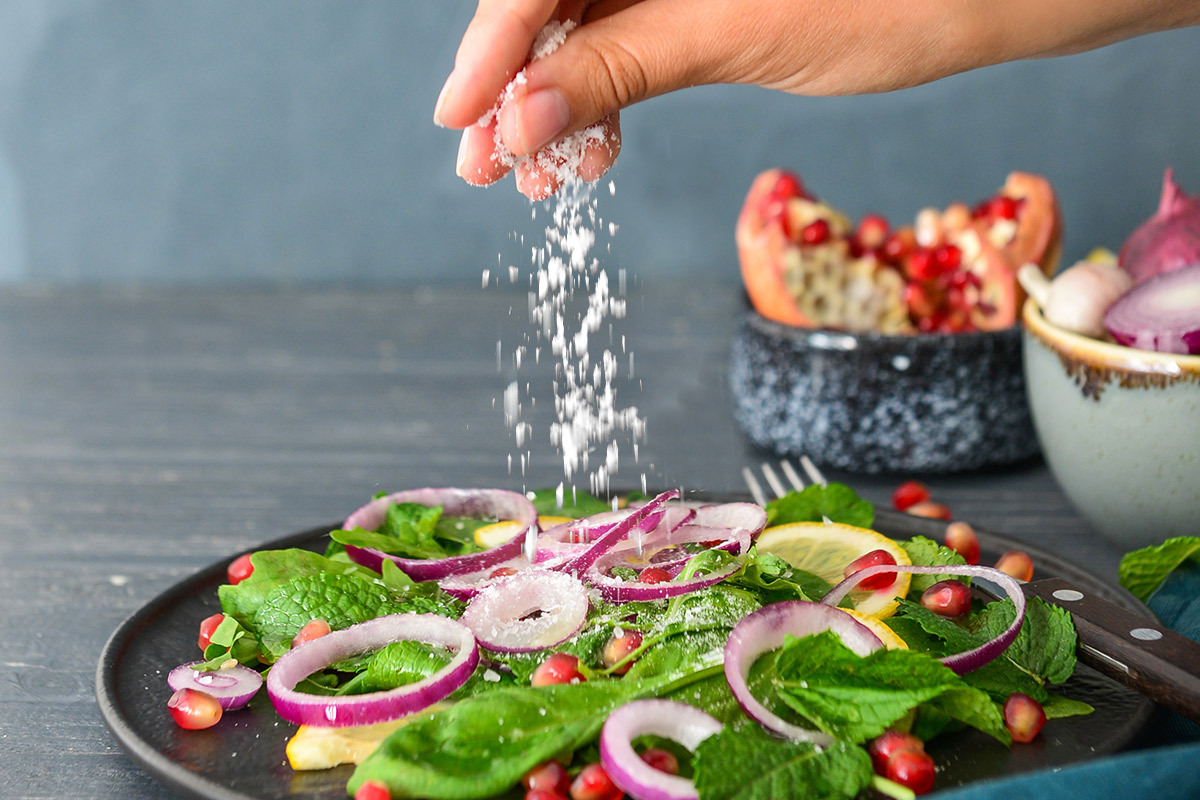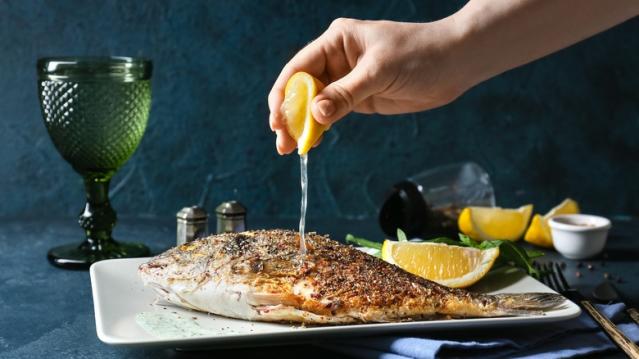We’ve all been there: you’re in the midst of preparing a delicious meal, and suddenly you realize you’ve gone a bit overboard with the salt, sugar, or spice. It’s a common kitchen mishap that can leave your dish tasting less than perfect. But fear not! With a few simple techniques, you can salvage even the most over-seasoned creations and turn them into culinary masterpieces. In this guide, we’ll explore various methods for fixing over-seasoned food, whether it’s too salty, sweet, spicy, or rich.
Too Salty

Understanding the Issue
Excessive saltiness can overpower other flavors in your dish, making it unpalatable. It often occurs due to a heavy hand while seasoning or using ingredients that are naturally high in sodium.
Adding Acidity
One of the most effective ways to counteract saltiness is by introducing acidity. Acids like lemon juice, lime juice, and vinegar can help balance out the saltiness and add brightness to your dish.
- Lemon Juice: The tangy flavor of lemon juice not only cuts through the saltiness but also adds a refreshing citrusy zing to your food.
- Lime Juice: Similar to lemon juice, lime juice provides acidity that can help neutralize excess salt while imparting a distinct flavor to your dish.
- Vinegar: Whether it’s white vinegar, apple cider vinegar, or balsamic vinegar, a splash of vinegar can bring balance to salty dishes, enhancing their overall taste.
Sweetening the Dish
In addition to acidity, sweeteners can also help mitigate saltiness by providing a contrasting flavor profile.
- Sugar: Adding a small amount of sugar can help balance out the saltiness and enhance the natural sweetness of other ingredients in your dish.
- Honey: The subtle sweetness of honey can complement savory flavors while helping to mask the excessive saltiness.
- Maple Syrup: Maple syrup adds a unique sweetness and depth of flavor that can counterbalance the saltiness without overpowering the dish.
Tips for Application
When applying these fixings, start with small quantities and taste as you go. It’s essential to gradually adjust the seasonings until you achieve the desired balance. Remember, it’s easier to add more than to correct an overly sweet or acidic dish. Additionally, consider the overall flavor profile of your dish and choose fixings that complement its ingredients and cuisine style.
Too Sweet

Identifying the Issue
Excess sweetness often occurs due to an overly generous hand with sugar or sweet ingredients. It can mask other flavors and leave your dish lacking in complexity.
Adding Acidity
Introducing acidity is a powerful way to counteract sweetness and bring balance to your dish. Acids like lemon juice, lime juice, and vinegar can help cut through the sweetness and add brightness to the flavors.
- Lemon Juice: The tartness of lemon juice provides a refreshing contrast to sweetness, helping to balance out the flavors and add complexity to your dish.
- Lime Juice: Similar to lemon juice, lime juice offers acidity that can help counteract sweetness while imparting its own distinct flavor to the dish.
- Vinegar: Whether it’s white vinegar, apple cider vinegar, or balsamic vinegar, adding a splash of vinegar can help neutralize excessive sweetness and enhance the overall taste of your dish.
Introducing Savory Elements
In addition to acidity, incorporating savory elements can help balance out sweetness and add depth to your dish.
- Chopped Fresh Herbs: Herbs like parsley, cilantro, or basil can add freshness and complexity to overly sweet dishes, creating a more well-rounded flavor profile.
- Citrus Zest: The zest of citrus fruits like lemon or orange adds intense flavor and aroma without adding extra sweetness, making it an excellent choice for balancing out overly sweet dishes.
- Pinch of Cayenne: A touch of cayenne pepper can add heat and spice to counteract sweetness, creating a more balanced and interesting flavor profile.
Tips for Application
When using these techniques, start with small amounts and taste as you go. Adjust the seasonings gradually until you achieve the desired balance of flavors. Keep in mind the overall flavor profile of your dish and choose complementary ingredients accordingly.
Too Spicy or Acidic

Understanding the Issue
Excessive spiciness or acidity often occurs when too much chili pepper, vinegar, or other acidic ingredients are added to the dish. It can result in a burning sensation or an overly tart flavor that masks other ingredients.
Incorporating Fat
Introducing fat is a common technique for mitigating spiciness or acidity in a dish. Fats help coat the palate and provide a soothing effect, reducing the intensity of the heat or tartness.
- Butter: Adding a knob of butter can help mellow out the heat and add richness to your dish, creating a smoother mouthfeel.
- Olive Oil: Drizzling olive oil over your dish can help soften the flavors and provide a subtle richness that balances out the acidity or spiciness.
- Heavy Cream: Creaminess can counteract the heat or acidity in your dish, making it more palatable and adding depth to the flavors.
- Cheese: Grated cheese can add richness and complexity to spicy dishes while helping to tame the heat and provide a creamy texture.
Sweetening the Dish
In addition to incorporating fat, sweeteners can also help balance out spiciness or acidity by providing a contrasting flavor profile.
- Sugar: Adding a small amount of sugar can help balance out the heat or tartness and provide a touch of sweetness to counteract the intensity.
- Honey: The natural sweetness of honey can complement spicy or acidic flavors, bringing balance to your dish and enhancing its overall taste.
- Maple Syrup: Maple syrup adds a subtle sweetness that can help temper the heat or acidity in your food, creating a more well-rounded flavor profile.
Tips for Application
When using these techniques, it’s important to start with small amounts and taste as you go. Adjust the seasonings gradually until you achieve the desired balance of flavors. Consider the overall flavor profile of your dish and choose complementary ingredients that will enhance its taste without overpowering it.
Too Rich
:max_bytes(150000):strip_icc()/raclette-gruyere-macaroni-and-cheese-with-pickled-shallots-FT-RECIPE1120-33cf12f2a2a04668aa4763483eb1a6f3.jpg)
Understanding the Issue
Excessive richness often occurs when dishes contain high levels of fat or rich ingredients such as cream, butter, or cheese. While these ingredients add flavor and texture, too much can result in a dish that feels overly heavy and indulgent.
Adding Acidity
Introducing acidity is a powerful way to cut through the richness and add brightness to your dish. Acids like lemon juice, lime juice, and vinegar can help balance out the richness and provide a refreshing contrast to the flavors.
- Lemon Juice: The tartness of lemon juice provides a bright and refreshing contrast to the richness of fatty dishes, enhancing their overall flavor profile.
- Lime Juice: Similar to lemon juice, lime juice offers acidity that can help cut through the richness and add complexity to your dish.
- Vinegar: Adding a splash of vinegar can help lighten up heavy dishes and provide a tangy contrast to the richness, creating a more balanced flavor profile.
Introducing Lighter Elements
In addition to acidity, incorporating lighter elements can help balance out the richness and make your dish feel more vibrant and refreshing.
- Pickled Vegetables: Adding pickled vegetables like jalapeños or onions can provide a tangy contrast to rich dishes, cutting through the richness with their acidity and adding a refreshing crunch.
- Citrus Juices: Freshly squeezed citrus juices can add brightness and acidity to rich dishes, helping to balance out the flavors and create a more well-rounded taste.
Tips for Application
Start Small
Begin by adding small amounts of the fixings, whether it’s lemon juice, sugar, or vinegar. You can always add more later, but it’s much more challenging to correct an overly seasoned dish once you’ve added too much.
Taste as You Go
Continuously taste your dish as you make adjustments. This allows you to monitor the flavor progression and make necessary corrections along the way. Remember, your taste buds are your best guide.
Gradual Adjustments
Make adjustments gradually to avoid over-correcting. Add a little bit of the fixings at a time, and then taste to assess the impact before adding more. This incremental approach ensures that you achieve the desired balance without going too far in one direction.
Consider the Overall Flavor Profile
Think about the overall flavor profile of your dish and how the fixings will complement the existing flavors. Choose fixings that will enhance the dish’s taste without overpowering it or clashing with other ingredients.
Keep It Consistent
Maintain consistency in your cooking by recording the adjustments you make to your recipes. This allows you to replicate successful fixes in the future and refine your culinary skills over time.
Be Patient
Fixing over-seasoned food requires patience and practice. Don’t get discouraged if your first attempt doesn’t yield perfect results. Experimentation and refinement are key to mastering the art of balancing flavors.
Trust Your Instincts
Cooking is as much about intuition as it is about following recipes. Trust your instincts and don’t be afraid to get creative with your fixes. Sometimes, unconventional combinations can lead to surprisingly delicious results.
Conclusion
Don’t let over-seasoning ruin your culinary creations! With these simple fixes, you can rescue even the most poorly seasoned dishes and turn them into delicious meals that will impress your family and friends. Remember to taste as you go and adjust the seasonings gradually until you achieve the perfect balance of flavors. Happy cooking.


